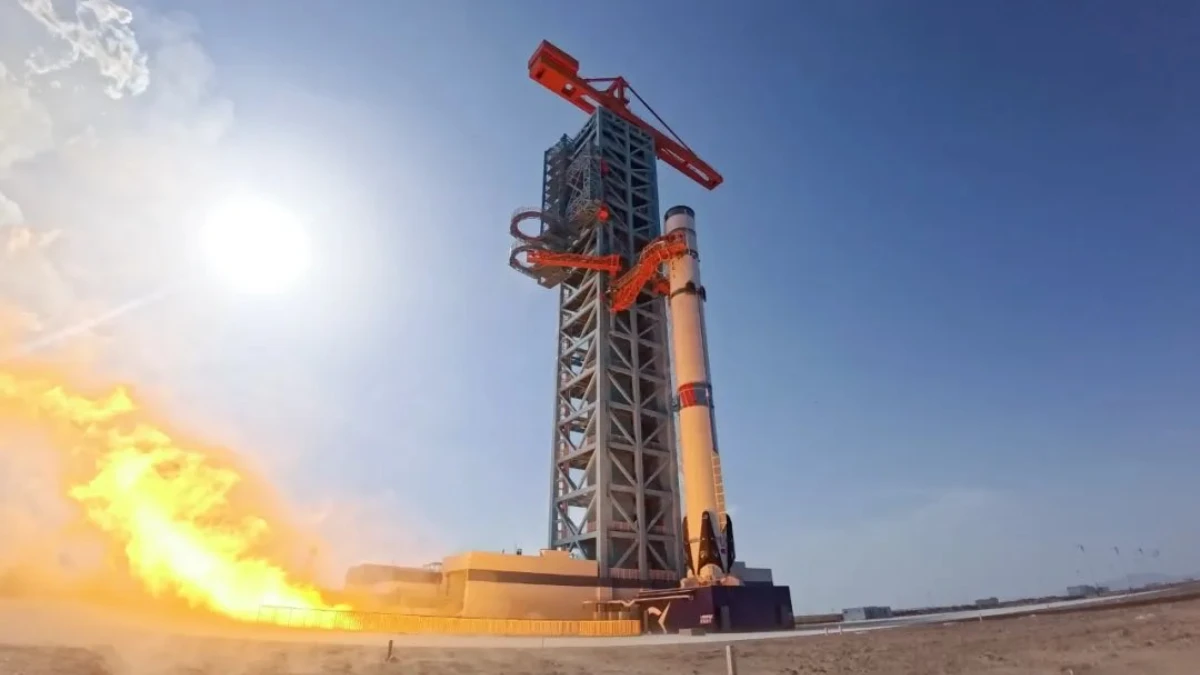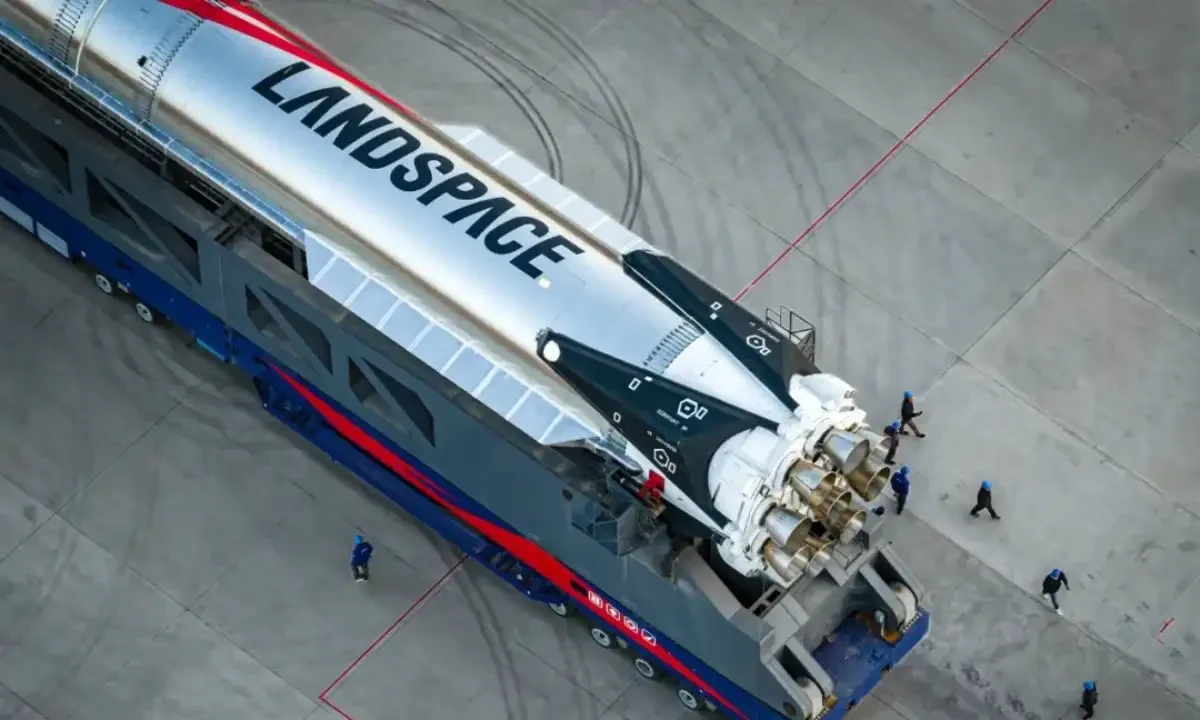| Summary |
|
China’s private rocket company LandSpace has completed a full-scale static fire test of its Zhuque-3 rocket, marking a major step toward its first orbital launch. The test took place on October 24 at the Dongfeng launch site, where all 12 engines on the first stage ignited successfully, confirming the rocket’s readiness for flight in the coming months.

The brief but powerful test saw Zhuque-3’s methane-fueled TQ-12 engines produce more than 900 tons of thrust combined, enough to lift 21 tons to low Earth orbit. That performance puts it on par with SpaceX’s Falcon 9, a comparison that has drawn attention across the global space community.
Zhuque-3 is a two-stage rocket designed for reusability. The first stage, made of stainless steel, is meant to return to Earth and land on its legs, while the upper stage is expendable. The choice of stainless steel makes the rocket more durable during reentry, reducing damage and maintenance time between launches.
Methane fuel is another key feature. Unlike kerosene, it burns cleaner and leaves less residue inside engines, which makes reuse more efficient. It’s also easier to produce synthetically, which could be useful for future missions to Mars. LandSpace has been testing the design for several years, including a 350-meter flight test of the booster in January 2024.
The similarities between Zhuque-3 and SpaceX’s Falcon 9 are clear: grid fins for steering, landing legs, and an emphasis on reusability to cut launch costs. But LandSpace’s approach adds a few improvements. By combining a stainless-steel structure with methane fuel, Zhuque-3 blends features from SpaceX’s Falcon 9 and Starship, both of which have influenced modern rocket design.
Online discussions have compared the two rockets in detail, with some enthusiasts noting that Zhuque-3’s 12 engines could offer greater redundancy than Falcon 9’s nine engines. Others have pointed out that while Falcon 9 has a long track record of success, Zhuque-3’s first launch will determine whether these design advantages hold up in practice.
SpaceX CEO Elon Musk said on X on October 24, 2025, “It will take them over 5 years to reach Falcon 9 levels of reliability and production/launch rate, by which time SpaceX will have transitioned to Starship and be doing over 100 times the annual payload to orbit of Falcon.”
For scientists and astronomers, reusable rockets like Zhuque-3 could open more opportunities for affordable missions. Lower launch costs mean smaller observatories, universities, and research teams could send instruments into orbit.
A reusable launcher capable of carrying heavy payloads could support more satellites and telescopes, expanding research into black holes, exoplanets, and cosmic radiation. China’s growing private space sector could also accelerate global competition, pushing faster innovation and more frequent missions.
LandSpace aims to launch Zhuque-3 before the end of the year, beginning with a test mission to prove its reusability. If the first flight succeeds, it could signal the start of a new chapter for Asia’s space ambitions.
The successful static fire marks a quiet but important milestone, showing that China’s private space industry is rapidly catching up with the world’s leading players.

